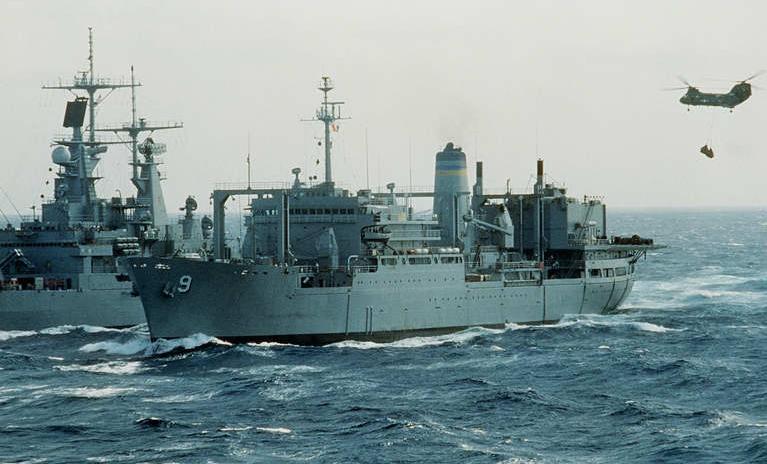USN Replenishment Ships
One of the stellar strengths of the USN is the ability to rapidly deploy globally with significant force and maintain that force for an indefinite period of time. The only way to do this is with a very capable network of support ships or facilities abroad that allows the combat ships to do their job. Prior to, but especially during World War Two, the USN perfected the techniques required for replenishing of ships at sea (RAS), and this capability has been maintained with some highly specialized ships. RAS is a fundamental part of the USN’s ability to operate.
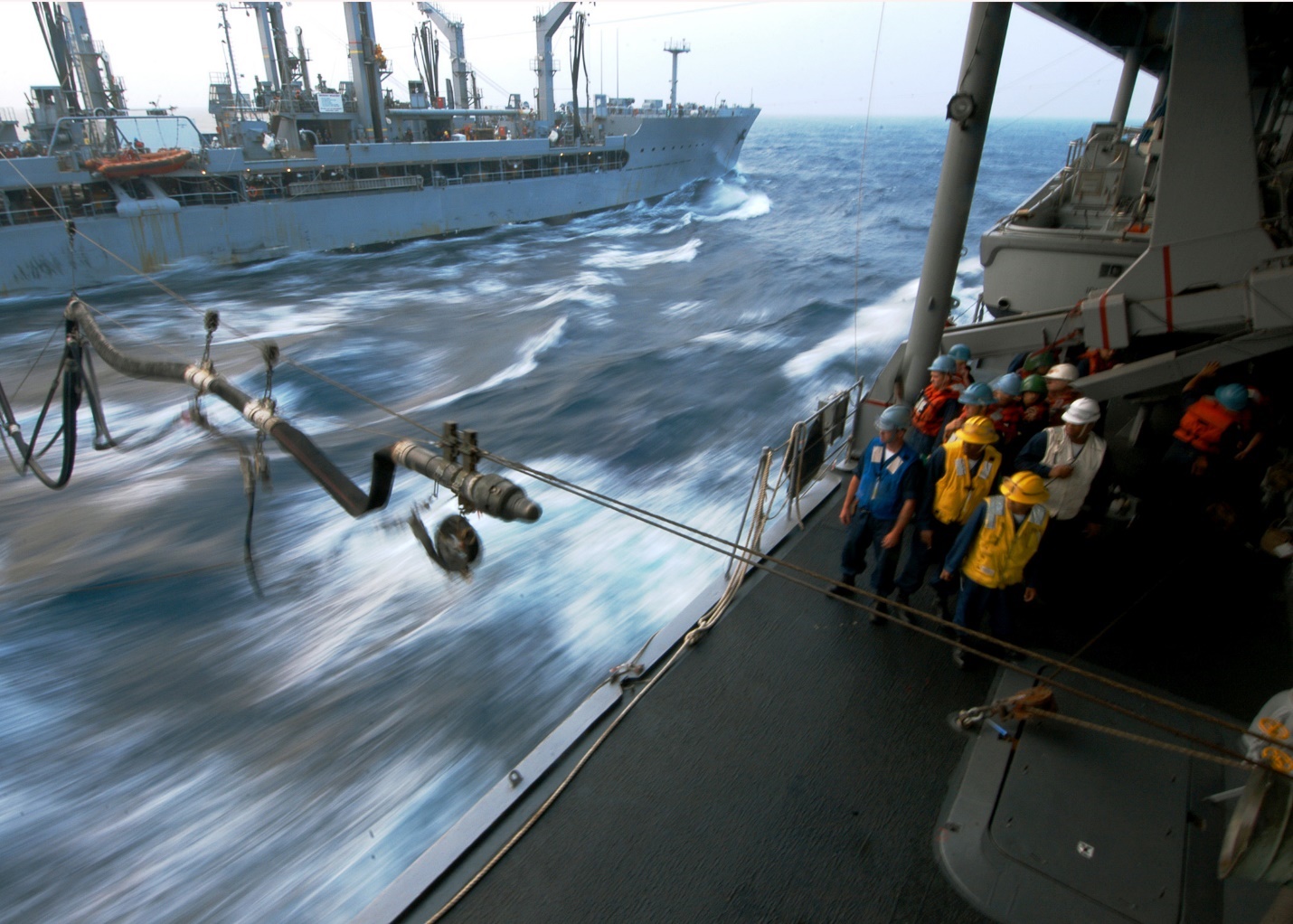
A full list of hull classifications can be found here, but a few of the basics will help understand the functions:
A= An Auxiliary ship (all ships in this category)
T= Indicates a civilian crew and prefixes the ship type. These are not generally designed to enter combat zones. These ships usually have the prefix USNS (United States Naval Ship) as they are not commissioned into the USN where they would carry the prefix USS (United States Ship). A similar arrangement exists for the UK’s Royal Navy’s with the Royal Fleet Auxiliary Ships (RFA).
O= An Oiler, or a fuel replenishment ships which could contain Bunker C oil, Diesel fuel, or Gas for Gas turbines.
E= Ammunition replenishment
F= Refrigerated
R= Repair (although there is an exception noted below)
S= General stores (wide range of supply from rations to spare parts)
So since they are all auxiliaries and some combine multiple functions in one ship, an example of the classifications become:
AE= Ammunition replenishment Auxiliary;
AR= Auxiliary Repair ship (has workshops, cranes etc to conduct repairs) not usually underway;
T-AO= An Oiler with a civilian crew;
AOE= Combat replenishment Auxiliary because it provides both fuel and ammunition;
AFS= Refrigerated Stores Auxiliary so this would primarily provide rations;
AOR= Replenishment Oiler, this is the exception to using ‘R’ normally used for ‘repair’. These ships are able to carry some dry goods, and some refrigerated goods in addition to fuel.
The Ideal method of employing these ships is that a Fast Combat Replenishment Ship (AOE) accompanies each Aircraft Carrier Battle Group (CVBG). This ship will keep the carrier full of aircraft ammunition and aviation fuel, the escorts full of fuel, and everyone full on rations and general stores. Once every few days the AOE detaches and replenishes itself from a Replenishment Group consisting of an Fleet Oiler (AO), an ammunition ship (AE) and a supply ship (AFS). Specific spare parts or small and important items would be flown in. Smaller Task Groups (TG) would maintain the same rhythm but with a smaller Replenishment Oiler (AOR). There are several problems with this system:
Not all Aircraft Carriers are nuclear powered by 1994 and the conventional powered carriers require a huge amount of fuel;
There just aren’t enough ships; seven AOEs for 10 CVBGs, seven AOR’s for multiple TGs including the Battleships which are a massive consumer of fuel;
A mix of fuel requirements amongst escorts, including allied ships, causes capacity issues;
Bad weather causes slow downs and limits RAS operations;
Surge operations draw down stocks rapidly; and
Ships with civilian crews are limited in their ability to sail in high risk areas.
AOE: Fast Combat Replenishment Ships: The USN operates two classes of these very high end ships, four Sacramento Class and three new Supply Class.
Supply Class: Historically, USS Supply was commissioned in Feb 94 and two of her sisters USNS Rainier and USNS Arctic followed in 95; in Northern Fury all were started on time and without Congressional budgeting issues, resulting in these three being commissioned into the USN prior to Feb 94. Three more in the class are still building (AOE-9 not canceled, AOE-11 ordered). The Supply Class is an extremely capable and efficient able to maintain high speeds with minimal crew over long distances.
| Pennant | Name | Historic | NF | Fleet | Home Port | Task |
|---|---|---|---|---|---|---|
| AOE-6 | Supply | Feb-94 | Jun-93 | Atlantic | Norfolk | Carl Vinson CVBG |
| AOE-7 | Rainier | Jan-95 | Oct-93 | Pacific | Bremerton | Washington CVBG |
| AOE-8 | Arctic | Sep-95 | Jan-94 | Atlantic | Norfolk | Workups |
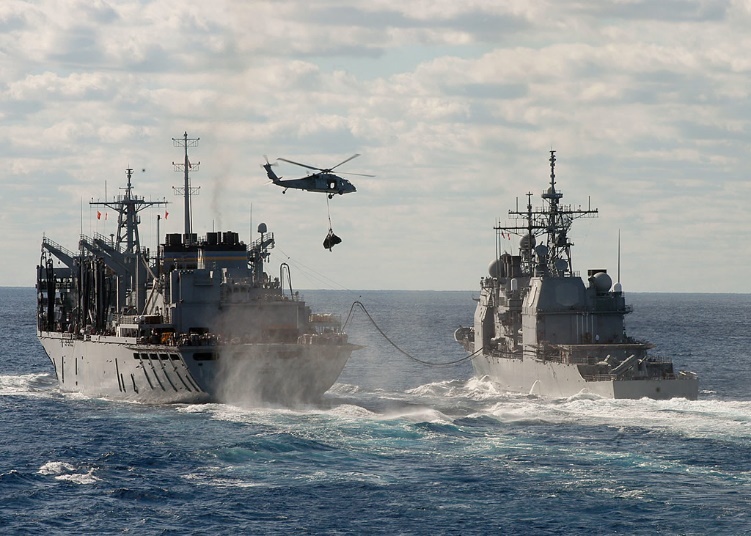
Sacramento Class: This class of ship modernized the methods of RAS used by the USN. By being able to supply fuel, ammunition and rations plus other stores, these ships reduced the time and vulnerability of conducting this task, as well as the number of ships required in high risk areas.
| Pennant | Name | Fleet | Home Port | Task |
|---|---|---|---|---|
| AOE-1 | USS Sacramento | Pacific | Bremerton | Constellation CVBG |
| AOE-2 | USS Camden | Pacific | Bremerton | Kitty Hawk CVBG |
| AOE-3 | USS Seattle | Atlantic | Norfolk | Enterprise CVBG |
| AOE-4 | USS Detroit | Atlantic | Norfolk | Eisenhower CVBG |
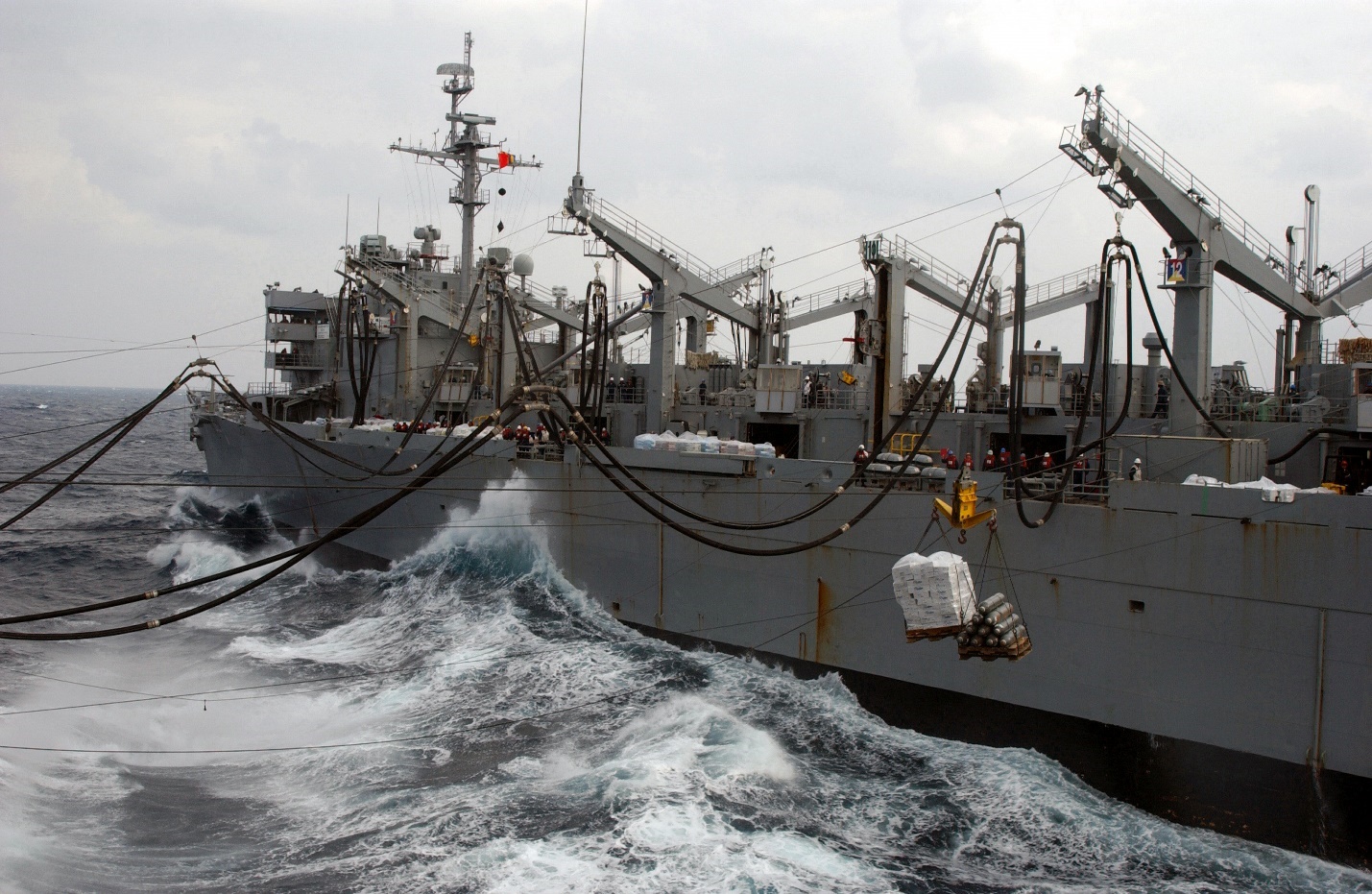
AOR: Replenishment Oiler: The Wichita Class is the only example of the AOR in USN service, although the type is widely used throughout NATO. Smaller, slower and less versatile than the AOEs, this class remains important because of a shortage of the bigger ships. One major issue is that they do not carry ammunition, so to restock a CVBG they would need to be accompanied by an AE. The first two of these ships were due to decommission but have been held on duty in Northern Fury until more of the Supply class come on line.
| Pennant | Name | Fleet | Home Port | Task |
|---|---|---|---|---|
| AOR-1 | Wichita | Pacific | Oakland | Refit |
| AOR-2 | Milwaukee | Atlantic | Norfolk | Tied Up |
| AOR-3 | Kansas City | Pacific | Oakland | TG New Jersey |
| AOR-4 | Savannah | Atlantic | Norfolk | Mediterranean |
| AOR-5 | Wabash | Pacific | Long Beach | Australia |
| AOR-6 | Kalamazoo | Atlantic | Norfolk | Mid Atlantic |
| AOR-7 | Roanoke | Pacific | Long Beach | Japan |
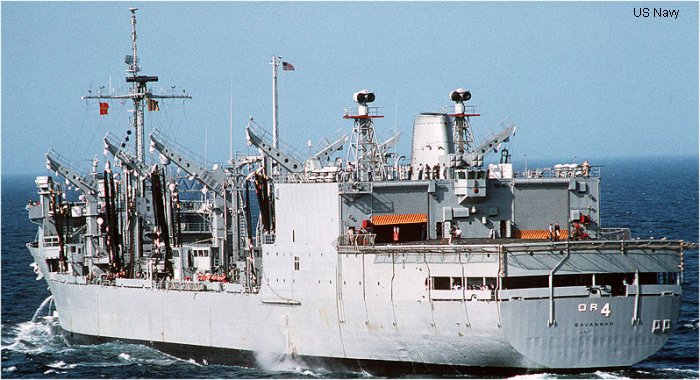
AO: Fleet Oilers: There are Five classes of Fleet oilers in service, the remaining Ashtabula Class, the Mispillion Class and, the Neosho Class which has been placed into reserve, the Henry J. Kaiser class which is just coming into service and the Cimarron Class which has been ‘Jumboized’ and now carries ammunition as a stop-gap to the shortage of AOEs.
Cimarron Class: Initially built as Fleet Oilers, all five of these ships went through a process where they were cut in half and had 108 feet added to their length, increasing fuel capacity by 50%, and adding the capability to carry and deliver 650 tons of ordnance and 420 tons of refrigerated and dry cargo. The added capacity allows them to act as AOEs but they’re limited to 20knts, so have difficulty keeping up with fast moving CVBGs.
| Pennant | Name | Fleet | Home Port | Task |
|---|---|---|---|---|
| AO-177 | Cimarron | Pacific | Pearl Hbr | Nimitz CVBG |
| AO-178 | Monongahela | Atlantic | Norfolk | Replenishment Gp |
| AO-179 | Merrimack | Atlantic | Norfolk | Roosevelt CVBG |
| AO-180 | Willamette | Pacific | Pearl Hbr | Constellation CVBG |
| AO-186 | Platte | Atlantic | Norfolk | Tied Up |
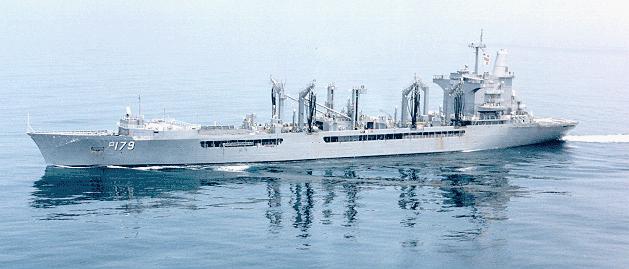
Henry J. Kaiser Class: A class of 18 Fleet Oilers designed to replace both the Mispillion and Neosho Classes which are nearing the end of their useful life. These ships were designed for civilian crews and were not built to military specifications, as such they are not meant to serve in high threat environments. The historic construction program for this class was convoluted and contentious. Suffice to say, that in the Northern Fury world, all 18 were, or would soon be completed, and that the completion time was closer to the four years of the earlier ships than the seven years some actually took to complete (or in two cases be scrapped at 85-95% completion!).
These ships carry as much fuel as the Supply Class AOE (180000 barrels’ vs 177000 barrels) but very limited dry goods storage and no ordinance. Most are on independent operations at the start of the war on task to refuel AOE, AOR or independent ships. No specific home ports are given as there are no Navy crews.
| Pennant | Name | Historic | NF | Fleet | Task |
|---|---|---|---|---|---|
| T-AO-187 | Henry J. Kaiser | Pacific | Preposition Sqn | ||
| T-AO-188 | Joshua Humphreys | Atlantic | |||
| T-AO-189 | John Lenthall | Atlantic | |||
| T-AO-190 | Andrew J. Higgins | Pacific | |||
| T-AO-191 | Benjamin Isherwood | scrapped | Dec 91 | Pacific | |
| T-AO-192 | Henry Eckford | scrapped | Dec 92 | Atlantic | |
| T-AO-193 | Walter S. Diehl | Pacific | |||
| T-AO-194 | John Ericsson | Pacific | |||
| T-AO-195 | Leroy Grumman | Atlantic | |||
| T-AO-196 | Kanawha | Atlantic | |||
| T-AO-197 | Pecos | Pacific | |||
| T-AO-198 | Big Horn | Atlantic | |||
| T-AO-199 | Tippecanoe | Pacific | |||
| T-AO-200 | Guadalupe | Pacific | |||
| T-AO-201 | Patuxent | Jul-94 | Dec-93 | Atlantic | |
| T-AO-202 | Yukon | Pacific | |||
| T-AO-203 | Laramie | May-96 | Jun-94 | ||
| T-AO-204 | Rappahannock | Nov-95 | Mar94 |
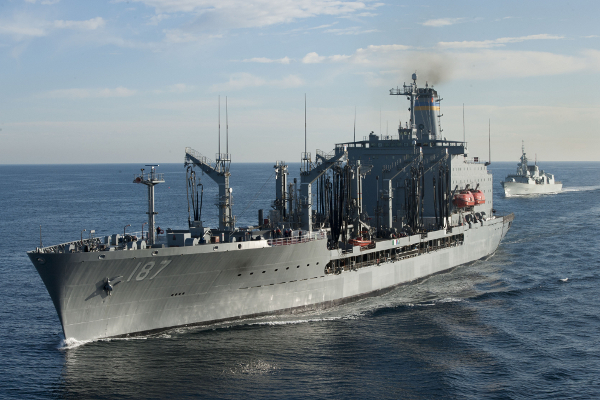
Neosho Class: Built in the mid 50’s these venerable old ships all saw plenty of use throughout the cold war and Viet Nam era. All are currently in reserve on either the east or west coast and will take between 10 and 30 days to reactivate. They carry about the same fuel capacity as the Kaiser Class and once activated will fill key gaps in the replenishment system.
| Pennant | Name | Status | Reactivation | Fleet |
|---|---|---|---|---|
| T-AO-143 | Neosho | Reserve | Mar-94 | Atlantic |
| T-AO-144 | Mississinewa | Reserve | Feb-94 | Atlantic |
| T-AO-145 | Hassayampa | Reserve | Feb-94 | Pacific |
| T-AO-146 | Kawishiwi | Reserve | Mar-94 | Pacific |
| T-AO-147 | Truckee | Reserve | Mar-94 | Atlantic |
| T-AO-148 | Ponchatoula | Reserve | Mar-94 | Pacific |
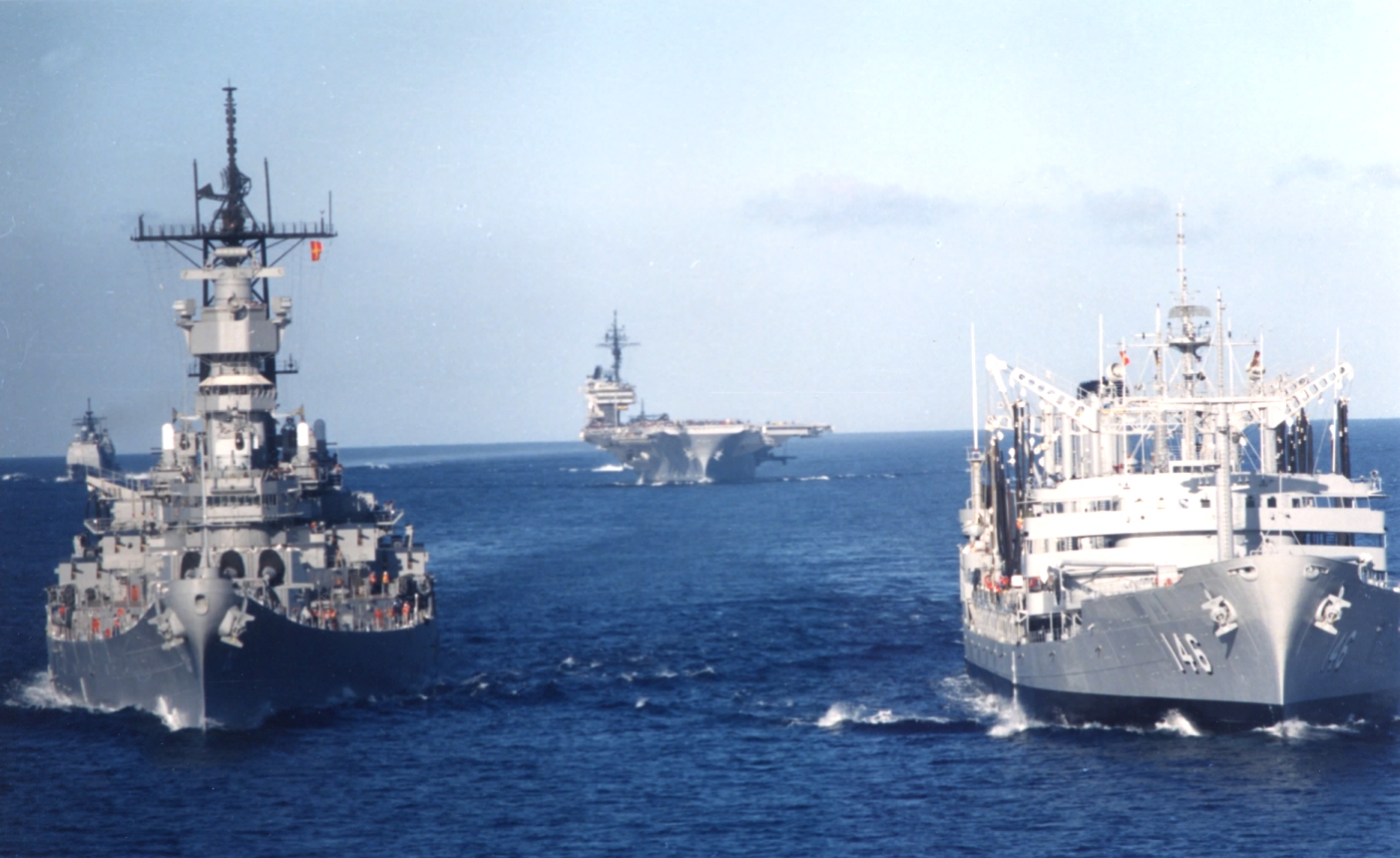
Mispillion Class: These five ships were laid down at the end of World War Two but were much improved from the previous Ashtabula class. Four still survive in reserve, one T-AO-107 Passumpsic was caught in the eruption of Mount Pinatubo while at Subic Bay Philippines in 1991 and suffered significant damage to her refueling systems, and was scrapped. The remainder will be reactivated and join the fleet. Even though they are ‘Jumboized’ they are still smaller than other AO classes and slower.
| Pennant | Name | Status | Reactivated | Fleet |
|---|---|---|---|---|
| T-AO-105 | Mispillion | Reserve | Apr-94 | Pacific |
| T-AO-106 | Navasota | Reserve | Apr-94 | Pacific |
| T-AO-107 | Passumpsic | Decom 91 | scrapped | |
| T-AO-108 | Pawcatuck | Reserve | May-94 | Atlantic |
| T-AO-109 | Waccamaw | Reserve | May-94 | Atlantic |
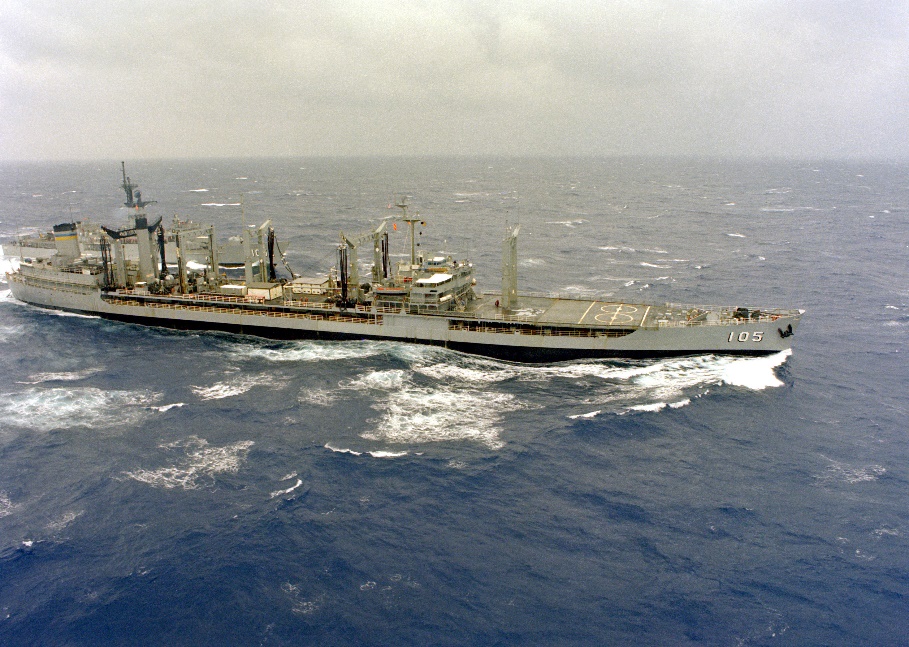
Ashtabula Class: Three of these old ships remain in the reserve fleet, Ashtabula herself being a World War Two veteran. The other two were build after the war but have the same design. Similar in size and design to the Mispillion class they have been ‘Jumboized’ but can only attain 18 knots at best possible speed.
| Pennant | Name | Status | Reactivated | Fleet |
|---|---|---|---|---|
| T-AO-51 | Ashtabula | Reserve | May-94 | Pacific |
| T-AO-98 | Caloosahatchee | Reserve | May-94 | Atlantic |
| T-AO-99 | Canisteo | Reserve | Jun-94 | Atlantic |
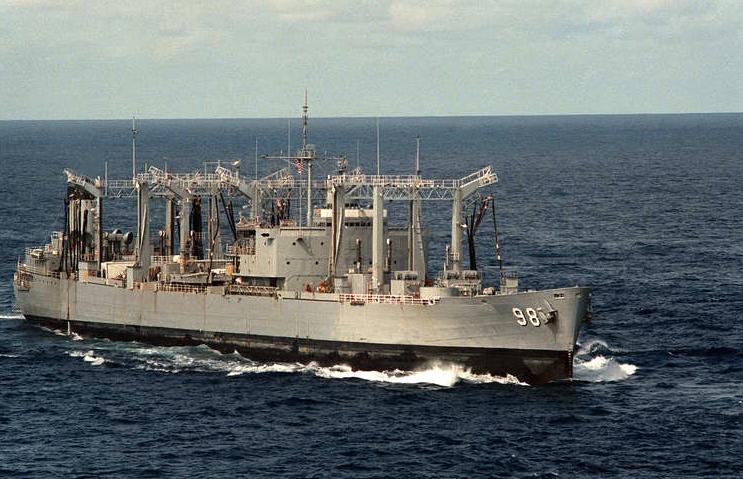
AE: Ammunition Replenishment Ships: There are two classes of AE, the Suribachi/Nitro Class and the Kilauea Class. An improved class of five ships was ordered between 91-94 and is building with the first ship (AE-36) due to launch in 1995, historically these ships were canceled.
Suribachi/Nitro Class: Sometimes considered two separate classes, the two Suribachi’s and three slightly larger Nitro’s are nearly identical in appearance and capability. Able to carry ten times the ammunition load of the AOE’s these ships are critical in keeping the Carrier Battle Groups in operation. Although nearing the end of their useful life, all remain in commission for Northern Fury.
| Class | Pennant | Name | Fleet | Homeport | Task |
|---|---|---|---|---|---|
| Suribachi | AE-21 | Suribachi | Atlantic | Mayport | Tied Up |
| AE-22 | Mauna Kea | Pacific | Concord CA | Philippines | |
| Nitro | AE-23 | USS Nitro | Atlantic | Norfolk | Tied Up |
| AE-24 | USS Pyro | Pacific | San Diego | Tied Up | |
| AE-25 | USS Haleakala | Pacific | San Diego | Pearl Harbor |
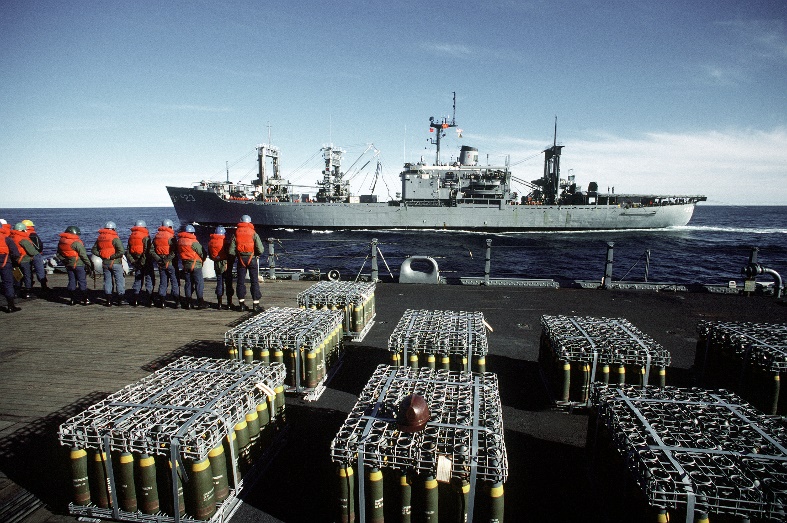
Kilauea Class: The lead ship of this class was transferred to the Military Sea Lift Command in 1980 but the remainder kept their commission in the USN (historically transferred between 95 and 97). These are very capable ships with modern stores handling equipment. They carry 6,000 Tons of munitions, some refrigerated stores, an are able to refuel other ships.
| Pennant | Name | Fleet | Homeport | Task |
|---|---|---|---|---|
| T-AE-26 | Kilauea | Pacific | Concord CA | Tied Up |
| AE-27 | Butte | Atlantic | Earle NJ | Mediterranean |
| AE-28 | Santa Barbara | Atlantic | Davisville RI | Tied Up |
| AE-29 | Mount Hood | Pacific | Concord CA | Diego Garcia |
| AE-32 | Flint | Pacific | Concord CA | Japan |
| AE-33 | Shasta | Pacific | Concord CA | Tied Up |
| AE-34 | Mount Baker | Atlantic | Charleston | Tied Up |
| AE-35 | Kiska | Atlantic | Earle NJ | Tied Up |
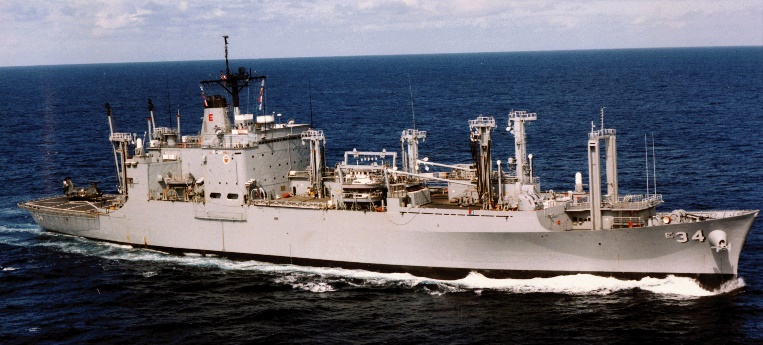
AFS: Refrigerated Stores Ships: These ships deliver dry goods, primarily rations to ships at sea. A total of 10 ships in two classes were in service, seven American built Mars Class and three British built Sirius Class
Mars Class: The Mars Class were commissioned in the 60’s and historically four were transferred to the Military Sealift Command between 93 and 95, in Northern Fury all seven remain in USN commission. Each of these ships carried two UH-46 Sea Knight helicopters and were armed with close defence weapons.
| Pennant | Name | Fleet | Homeport | Task |
|---|---|---|---|---|
| AFS-1 | Mars | Pacific | Oakland | Pearl Harbor |
| AFS-2 | Sylvania | Atlantic | Norfolk | Tied Up |
| AFS-3 | Niagara Falls | Pacific | Guam | Tied Up |
| AFS-4 | White Plains | Pacific | Guam | Diego Garcia |
| AFS-5 | Concord | Atlantic | Norfolk | Mediterranean |
| AFS-6 | San Diego | Atlantic | Norfolk | Tied Up |
| AFS-7 | San Jose | Pacific | Guam | Philippians |
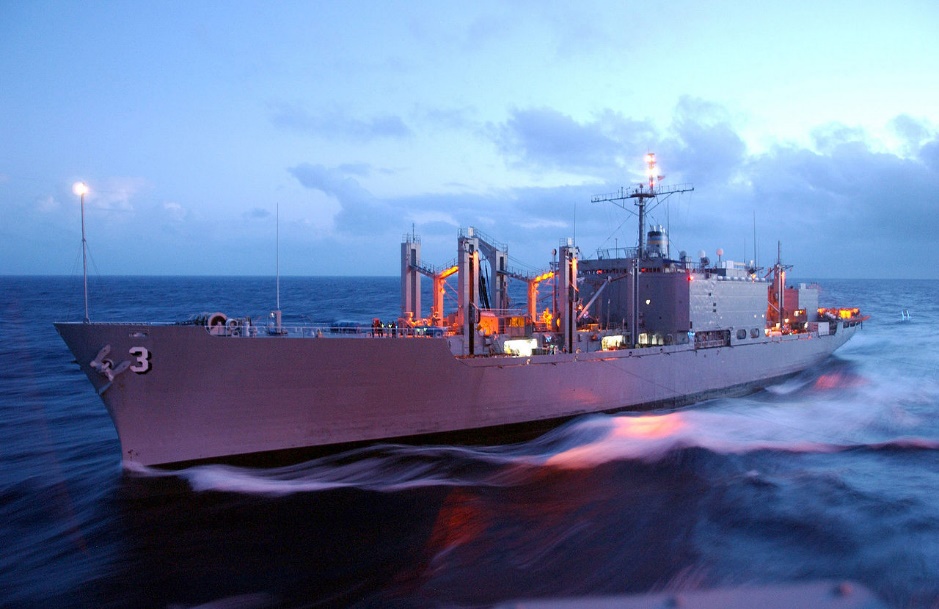
Sirius Class: Originally built as Fleet Auxiliaries for the Royal Navy (Lyness Class) about the same time as the Mars class, these three ships were purchased by the USN in the early 80’s to augment the increased logistic demands for operating in the Indian Ocean. They were never commissioned into the USN but were operated by the Military Sealift Command. They carried two UH-46 Sea Knight helicopters but are unarmed.
| Pennant | Name | Fleet | Homeport | Task |
|---|---|---|---|---|
| T-AFS-8 | Sirius | Atlantic | Norfolk | Tied Up |
| T-AFS-9 | Spica | Atlantic | Norfolk | Bahrain |
| T-AFS-10 | Saturn | Atlantic | Norfolk | Azores |
